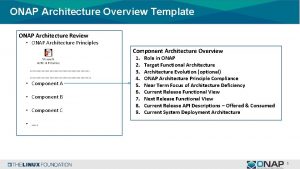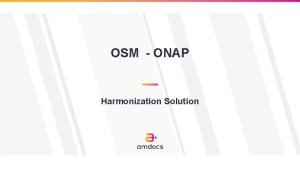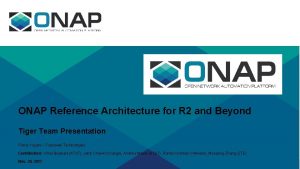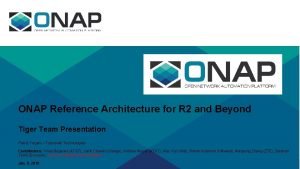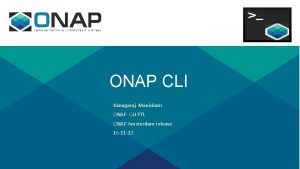Architecture Face to Face Planning Meeting ONAP Architecture




- Slides: 4

Architecture Face to Face Planning Meeting ONAP Architecture – Modeling Inter-Relationship Andy Mayer; Deng Hui

ONAP Modeling Subcommittee Role Guide the development ONAP Abstractions and Constructs, and form and document Common Models: • Provide a coherent view of shared information • Identify common abstractions and constructs across ONAP • Capture common terms and definitions with respect to shared information • Help identify unplanned redundancy • Mapping of information to interactions for common interfaces (and microservices) (Joint with Arch) • Identify the primary authority (or Steward) and consumers for each piece of shared information from a functional perspective (Joint with Arch) • Form a common Integrated ONAP Information Model and associated Data Models to be used as an integration resource (Federated approach) • Define Model Versioning Strategy based on ONAP Common Versioning Strategy 2

How do we enable Model Driven ONAP? 3 1 Use Model • Common shared data • Functions work off common model • Data translation layer at edge 2 Create Model • SDC Environment • Design Models • Design Catalogs • Data Dictionary Deploy Model • Run-time Models • Run-time Catalog • Common Model Parsers

Shared Architecture and Modeling Concerns Enablement of Model Driven ONAP • Common definitions and models of Shared Information (and data models) across APIs and Microservices (Papyrus). Components identify inputs & outputs • Identification of ONAP Components as “Source of Truth” and “Consumers” of Information (wrt ONAP Information Model) • Lifecycle Stages of Information (e. g. , On-Board, Design, Instantiate, Operate) • Modeling of containerized VNFs and Multi-cloud requirements • Hybrid Environment (VNFs, PNFs, ANFs) • “ONAP of a Black Box” – Standards at the edges, ONAP inside • ONAP Modularization • Modeling as part of Architectural artifacts (e. g. , data models, information models, state models, interaction diagrams, etc. ) • Participation of ONAP Components in transitioning to a target state
